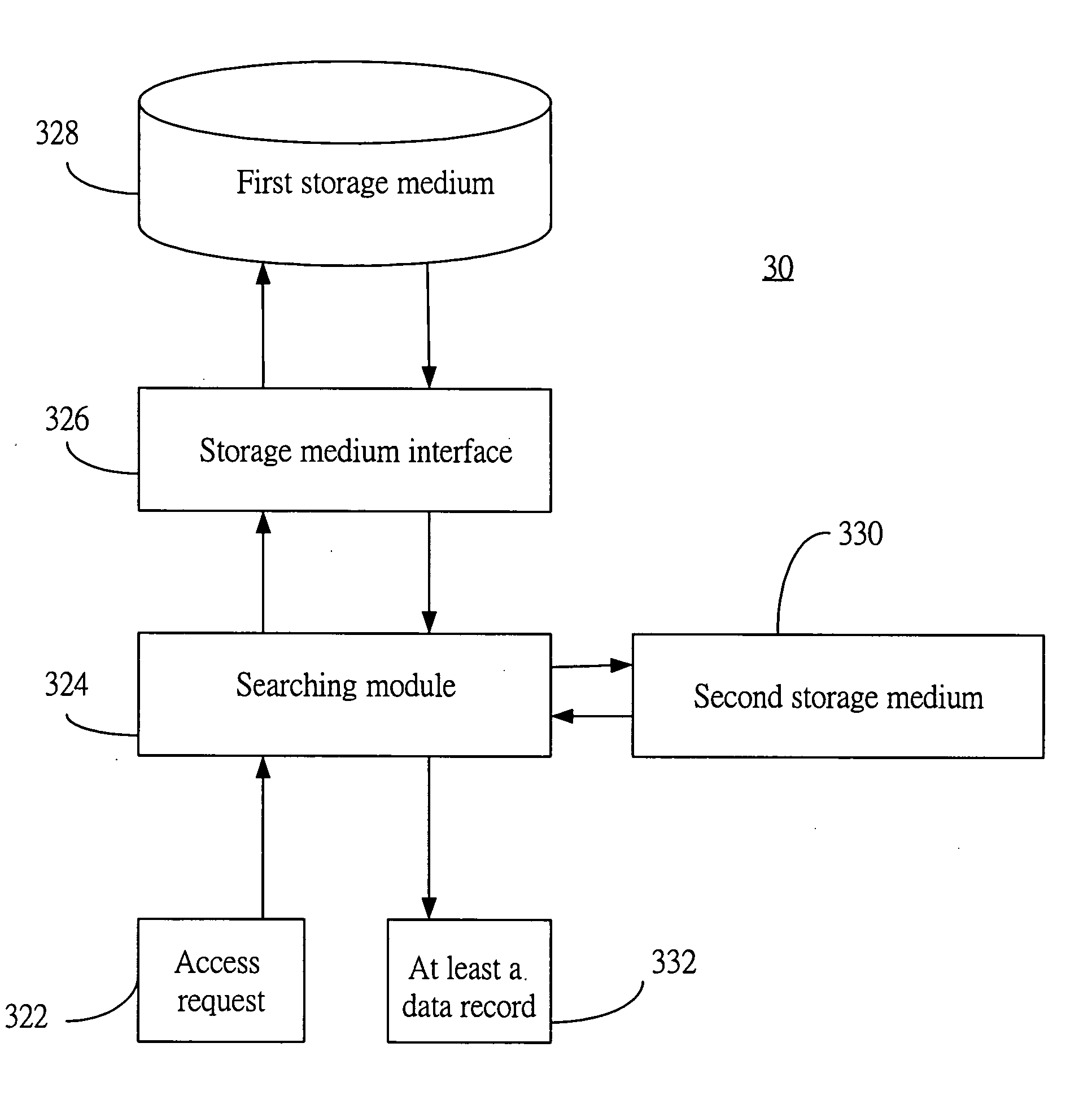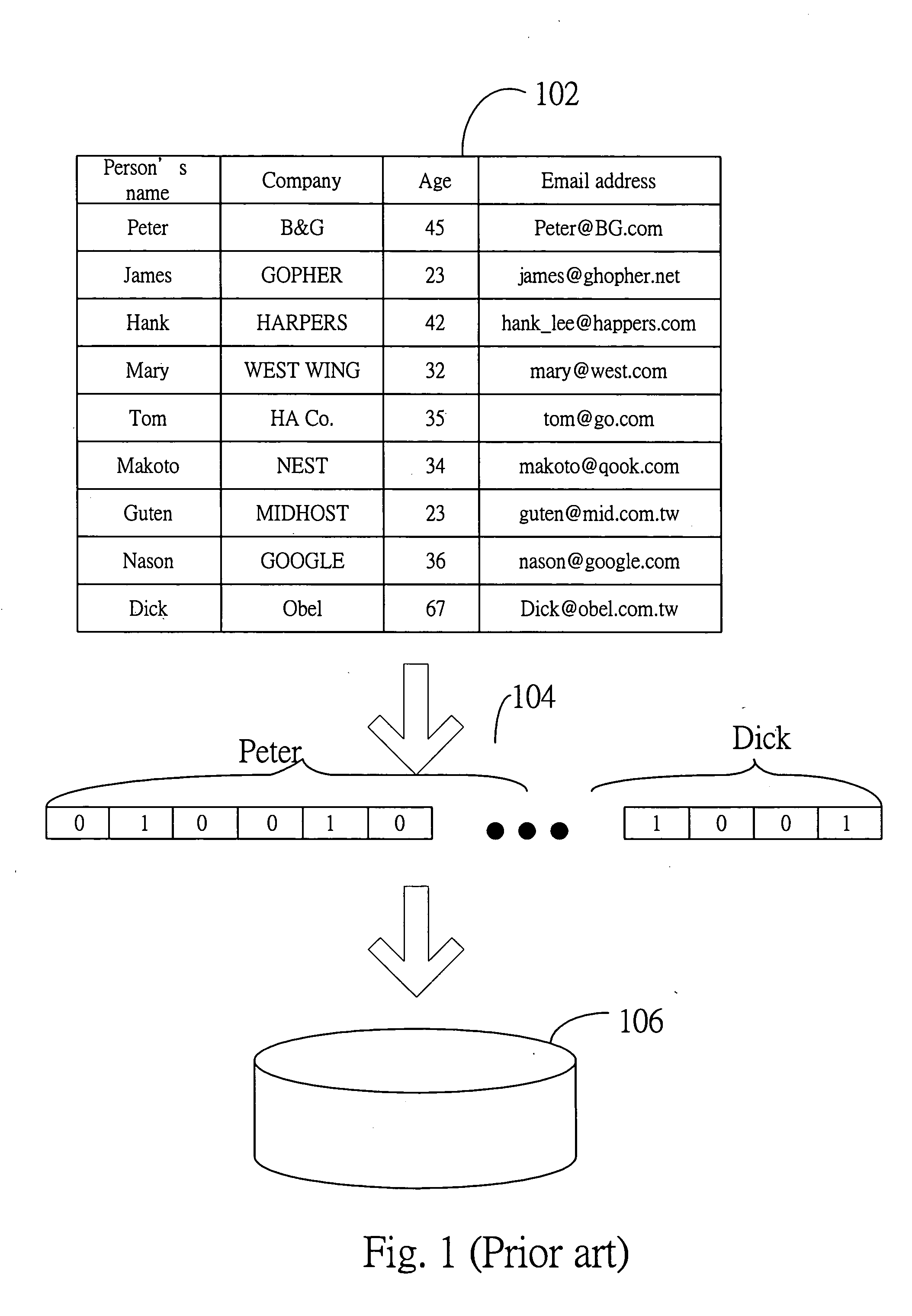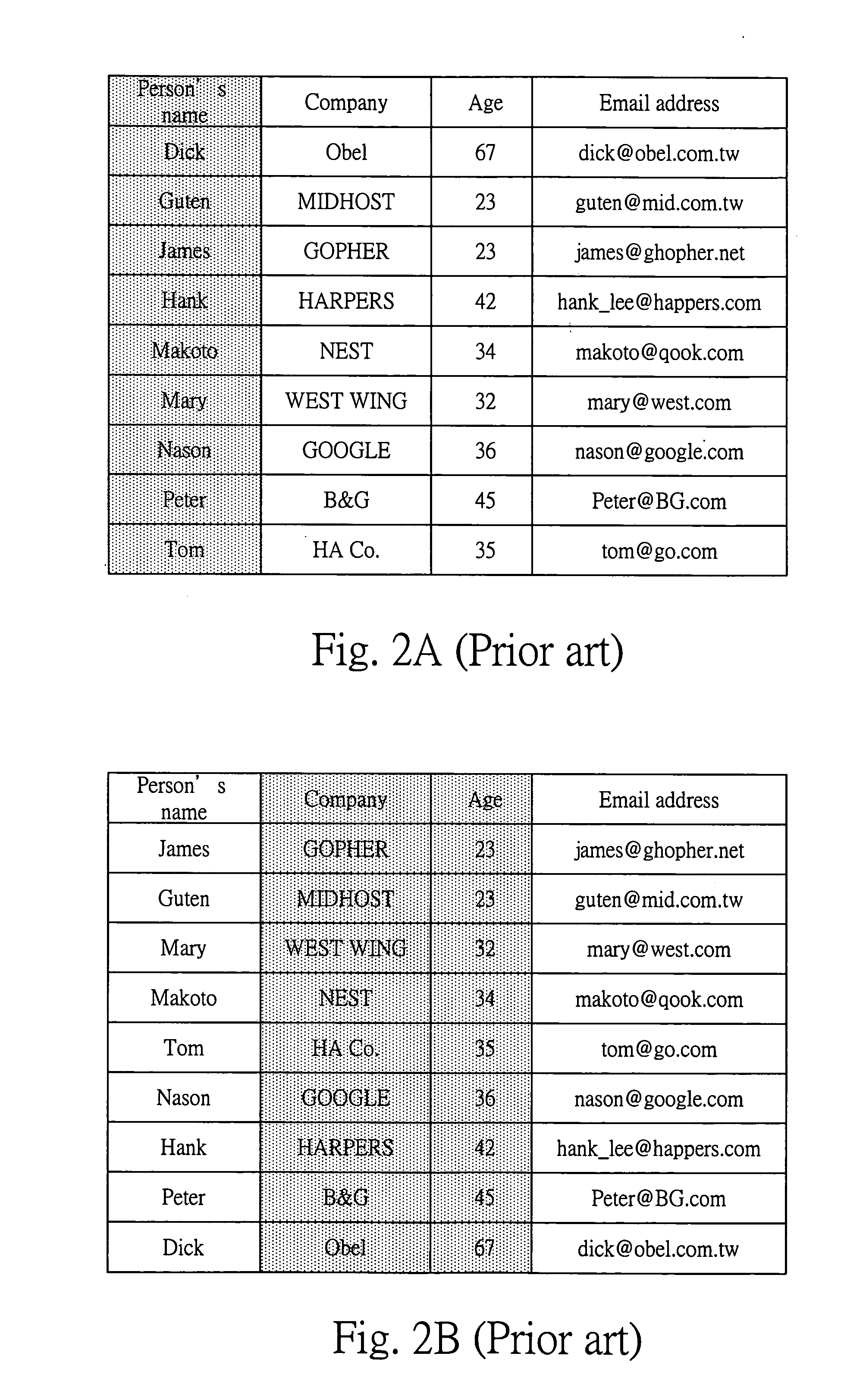Database system and data accessing method thereof
- Summary
- Abstract
- Description
- Claims
- Application Information
AI Technical Summary
Benefits of technology
Problems solved by technology
Method used
Image
Examples
Embodiment Construction
[0037]FIG. 3 illustrates a database system 30 according to a preferred embodiment of the invention. The database system 30 has at least a first storage medium 328, a storage medium interface 326, a second storage medium 330, and a searching module 324.
[0038] The first storage medium 328, such as a hard disk, a compact disk, a magnetic tape, a flash memory, or a distributed storage system, is used to store data records of the database. When the storage medium interface 326 for the first storage medium 328 receives a record indicator, such as a relative address in a certain sector, the storage medium interface 326 reads and retrieves from the first storage medium 328 the data record 332, to which the record indicator points. In other words, the storage medium interface can be software such as a driver program, hardware such as a controller, or any combination of software and a hardware that is able to receive the record indicator and then retrieve the corresponding data record.
[0039...
PUM
 Login to View More
Login to View More Abstract
Description
Claims
Application Information
 Login to View More
Login to View More - R&D
- Intellectual Property
- Life Sciences
- Materials
- Tech Scout
- Unparalleled Data Quality
- Higher Quality Content
- 60% Fewer Hallucinations
Browse by: Latest US Patents, China's latest patents, Technical Efficacy Thesaurus, Application Domain, Technology Topic, Popular Technical Reports.
© 2025 PatSnap. All rights reserved.Legal|Privacy policy|Modern Slavery Act Transparency Statement|Sitemap|About US| Contact US: help@patsnap.com



